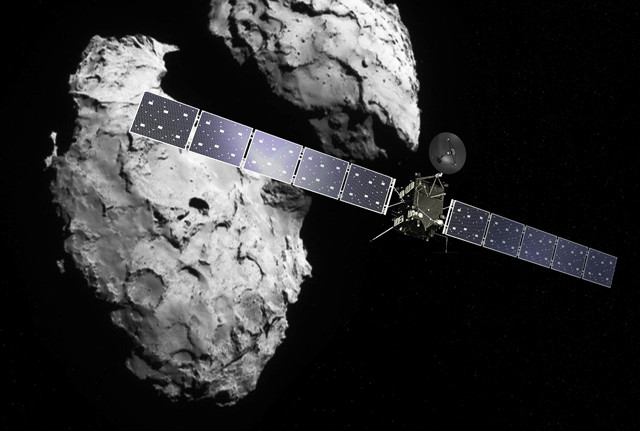
by Harvey Leifert Wednesday, September 28, 2016

Artist's impression of the Rosetta spacecraft approaching its destination: Comet 67P/Churyumov-Gerasimenko. Credit: ESA/ATG medialab/Rosetta/Navcam.
All of the names associated with the Rosetta mission, including the orbiter itself, the lander and all of the place names coined by mission scientists on 67P, refer to ancient Egyptian sites or deities, in homage to the Egyptian origin of the Rosetta Stone and Philae obelisk.
Rosetta itself is not an acronym, of course, but the name given to a stone tablet discovered in the late 1800s in the Nile Delta containing multilingual texts that allowed scientists to decipher ancient Egyptian hieroglyphics for the first time. The Philae lander is named for an island in the Nile River. An obelisk found there also provided Greek and hieroglyphic texts.
Comet 67P/Churyumov-Gerasimenko has nothing to do with Egypt, of course, and is named for Klim Churyumov, the scientist who spotted it in a photograph taken by Svetlana Gerasimenko in 1969. Both are Ukrainian astronomers. “67P” records that this was the 67th periodic comet discovered and is sufficient to uniquely identify this comet.
© 2008-2021. All rights reserved. Any copying, redistribution or retransmission of any of the contents of this service without the expressed written permission of the American Geosciences Institute is expressly prohibited. Click here for all copyright requests.